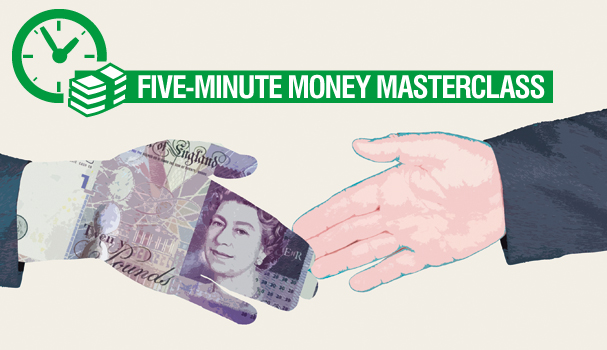In the eyes of some business leaders, the government’s Funding for Lending Scheme (FLS) is yet to fulfil its potential as our nation’s ambitious entrepreneurs struggle to secure a loan, overdraft or other financial support package from the bank. Of course, the other side of the argument is that in such an age of austerity, many businesses simply have no interest in taking on any debt at the moment. Regardless of what one believes though, a fair proportion of start-ups do often need a helping hand at some point in their journey. What, then, will convince the bank to give them the big thumbs up?
 Make a credible request
Make a credible request
Whilst a bank is generally happy to assist a small business where possible, it won’t be prepared to part with significant sums of money for no good reason. “The worst thing you can do is go to a bank and say ‘I have got this new start-up venture – how much will you lend me?’” says Mike Conroy, a senior manager in the business management unit at HSBC. “You have to demonstrate that you have got that clarity about why you want it, because that breeds confidence and allows somebody in the bank to think ‘this is a good customer, they have got a good idea, it has been well thought through, I think this is quite a reasonable risk for the bank to accept’.” Conroy also suggests that the business owner should not hold back from asking for big bucks, if that is what is required. “It is probably a good idea not to underestimate the amount you request,” he says. “What you don’t want to do is ask for a sum of money and then come to the bank two months later to ask for some more.”
 Present a solid financial picture
Present a solid financial picture
As strong as an entrepreneur’s business proposition may be, their financial credentials will also come under the microscope in that crucial meeting with the bank manager. “What a lot of business owners don’t understand is that from the moment they open a bank account, their credit score is being assessed,” says Conroy. “So even though you are not borrowing any money, an assessment of the viability of the business and your financial worthiness is being calculated.” Indeed, this can have a significant bearing on one’s chances of securing finance further down the line. “What sometimes happens is people open up a start-up account and they don’t borrow for 12 months,” Conroy adds. “They don’t pay a great deal of attention to financial matters, so they might inadvertently let a payment slip or perhaps the account goes overdrawn without arrangement, or they do something that is not what you and I would recognise as ideal behaviour by a customer. So it is important for people to realise that even when you’re not borrowing, paying attention to financial affairs is actually an important determinant on whether they would get the money 12 months on.”
 Have a fool-proof business plan
Have a fool-proof business plan
If there is one thing a business owner should be prepared for upon sitting down with the bank, it is questions – and lots of them. Ideally though, the majority of these will be answered with a well-formed business plan. “In terms of formally applying for the credit, you need to make sure you have a robust and sensible business plan which not only looks at the positive features of why you want to make the investment, but also what are the contingencies you put in place,” Anthony Thomas, head of SME markets at Lloyds TSB. “For example if you are trading overseas, what tolerance have you put in there for movements in exchange rates?” And it is generally a matter of quality over quantity in this regard. “Some people think that more information is better and in a way, that is correct, but it has to be relevant information,” says Thorsten Seeger, head of business banking at Barclays. “So what we really like to see from businesses is that they have got some sort of management accounting in place, that they know their KPIs, and are doing some forward planning.”
 Demonstrate your ability to repay
Demonstrate your ability to repay
All said and done, a bank will be reluctant to lend if an applicant can’t clearly show how he or she intends to return the money they have borrowed. “Everything may look very good on paper but the bank is going to look at it and ask ‘can this business afford £500 a month?’ or ‘how does that overdraft get cleared?’” says Conroy. He goes on to suggest one way of tackling such awkward questions. “You can often do that by including a cashflow forecast in your business plan,” he explains. “That way, you can evidence the bank and say ‘I have given this a lot of thought and this is definitely the sum of money I need and it will repaid over the next 12, 18, or 24 months’. It is easy for a business to do some homework beforehand and get some idea as to what those levels of repayments are. It is all about being prepared.”
 Don’t leave it too late
Don’t leave it too late
The most successful entrepreneurs are generally those who identify an obstacle well in advance of it occurring, and put a contingency plan in place to help evade it when the time comes. This is certainly worth bearing in mind when you’re a shiny new start-up. “We sometimes get people come to us and say ‘I’ve got a problem, I am out of money – I need £200,000 very quickly’,” says Seeger. “That puts us in a much more difficult situation than somebody who comes to us and says ‘based on my management information and my forward planning, I know that in three or four weeks’ time, I will have some cash flow shortages and I need an overdraft in place’. It is pretty much an open discussion but the most important part is that they approach us as early as possible and talk to us about the funding that they will require.” ![]()
Share via:

 Make a credible request
Make a credible request Present a solid financial picture
Present a solid financial picture Have a fool-proof business plan
Have a fool-proof business plan Demonstrate your ability to repay
Demonstrate your ability to repay Don’t leave it too late
Don’t leave it too late






































